A few months ago, I needed to expand my network on Twitter. Not just for casual following, but for something bigger: collaborations, partnerships, and learning from the right people.
For example, I was searching for crypto influencers in New York. Some were potential partners for content collaborations, some I wanted to follow for insights, and others I just wanted to keep on a radar for industry monitoring.
At first, I did what everyone does:
- I searched hashtags like #crypto and #Bitcoin.
- I clicked through dozens of profiles.
- I tried to figure out who was actually based in New York.
- I guessed who was influential by looking at follower counts.
After hours of this, my results were disappointing. Some accounts weren’t even in New York, others looked inactive, and many weren’t influential at all. It felt like looking for a needle in a haystack.
That’s when I realized: Twitter’s native search tools weren’t built for this kind of targeted influencer discovery.

Why Finding Influential Users Matters
On Twitter, influencers aren’t just about follower numbers—they’re the voices that drive conversations. If you want to succeed in networking, brand growth, or even research, identifying and connecting with these voices is essential.
Here’s why it matters:
➡️ Collaboration opportunities: Influencers can become partners for campaigns, joint projects, or events.
➡️ Better networking: Following and engaging with influencers gets you closer to the center of your niche community.
➡️ Knowledge advantage: Influential users are often the first to share breaking news, insights, or industry updates.
➡️ Growth and visibility: By engaging with influencers, your own account becomes more visible to their followers.
➡️ Regional focus: Finding influencers in your own region (e.g., NYC crypto, London startups, Dubai fintech) ensures your connections are relevant and accessible.
But here’s the problem: finding the right mix of topic + region influencers is tough with Twitter’s built-in tools.
The Limitations of Native Twitter Search
Yes, Twitter lets you search for hashtags, keywords, or trending topics. But when I tried to build my influencer network manually, here’s what I ran into:
❌ No reliable location filter: Twitter doesn’t let you easily filter users by city or region.
❌ Follower count ≠ influence: Some users had 100k+ followers but almost no engagement. Others had smaller audiences but huge impact.
❌ Manual and slow: Every single account required clicking, reading bios, and manually deciding if they belonged on my list.
❌ Messy results: I ended up with random profiles mixed with spam accounts.
For my “Crypto NYC” project, it took me two hours to put together 20–30 profiles. And I wasn’t even confident I had the right ones.
That’s when I decided to try a smarter way.
The Better Way: Circleboom Twitter
This is where Circleboom Twitter completely changed the game for me.

Unlike Twitter’s built-in search, Circleboom is designed for professional account discovery, filtering, and management. It’s also an official Twitter/X partner, which means everything runs safely within Twitter’s API rules.
That matters—a lot—because with other random tools you risk suspension or data issues. With Circleboom, your account and data are safe.
What Circleboom Does Differently
Here’s why Circleboom made influencer discovery not only possible but easy:
1. Find Influencers Tool: Instead of manually guessing, Circleboom has a dedicated tool that instantly surfaces influential accounts in any niche.
Results aren’t just based on follower counts—they highlight accounts with real impact.
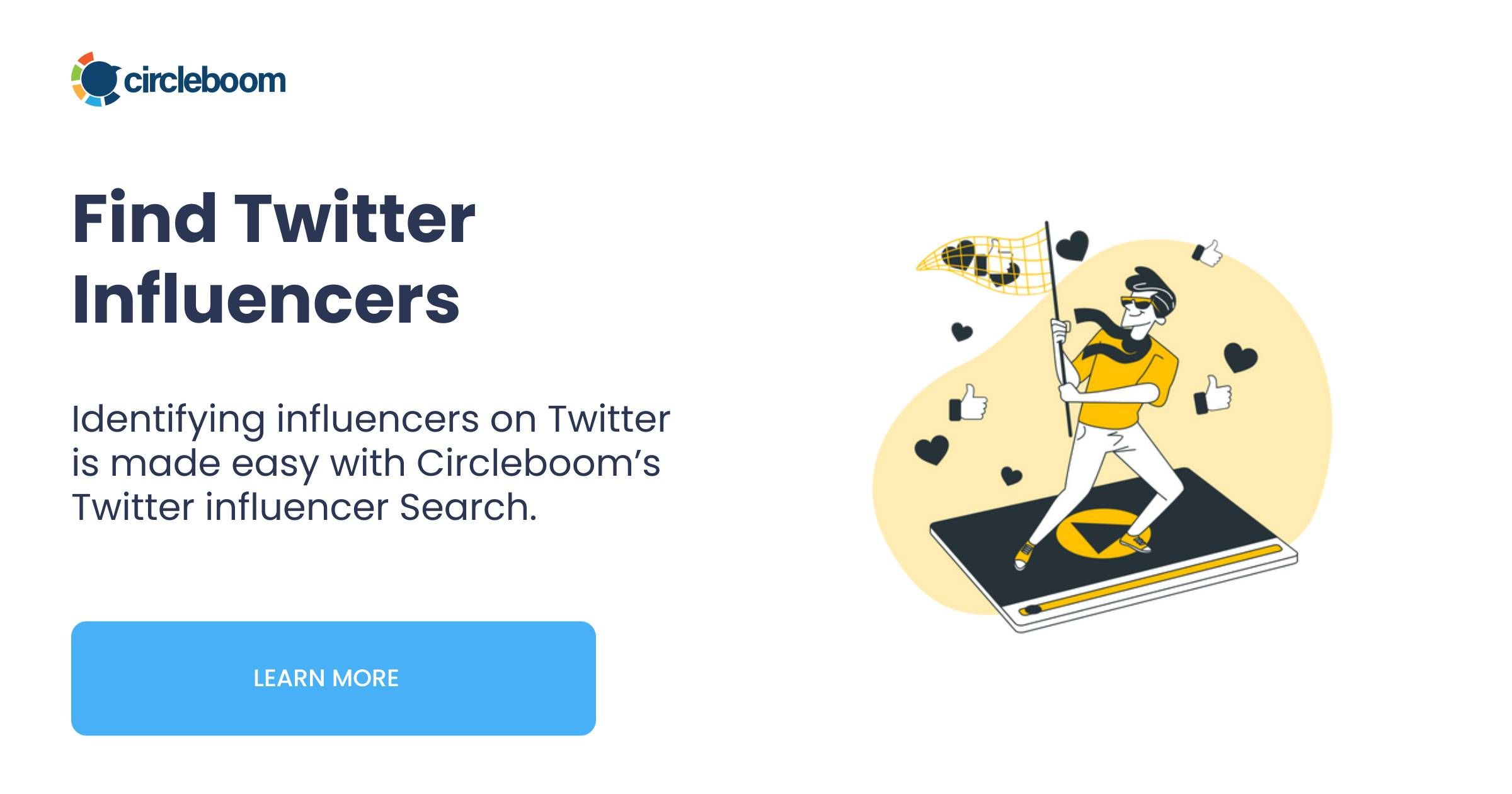
2. Smart Search: You can search for accounts by keywords in their bios, hashtags they use, or topics they engage with.

Example: Search “AI researcher” → instantly see all accounts with that keyword in their bio.
3. Location Filters: Unlike Twitter itself, Circleboom lets you filter by city or region.
That means “crypto” + “New York” really gives you NYC crypto accounts—not random global ones.
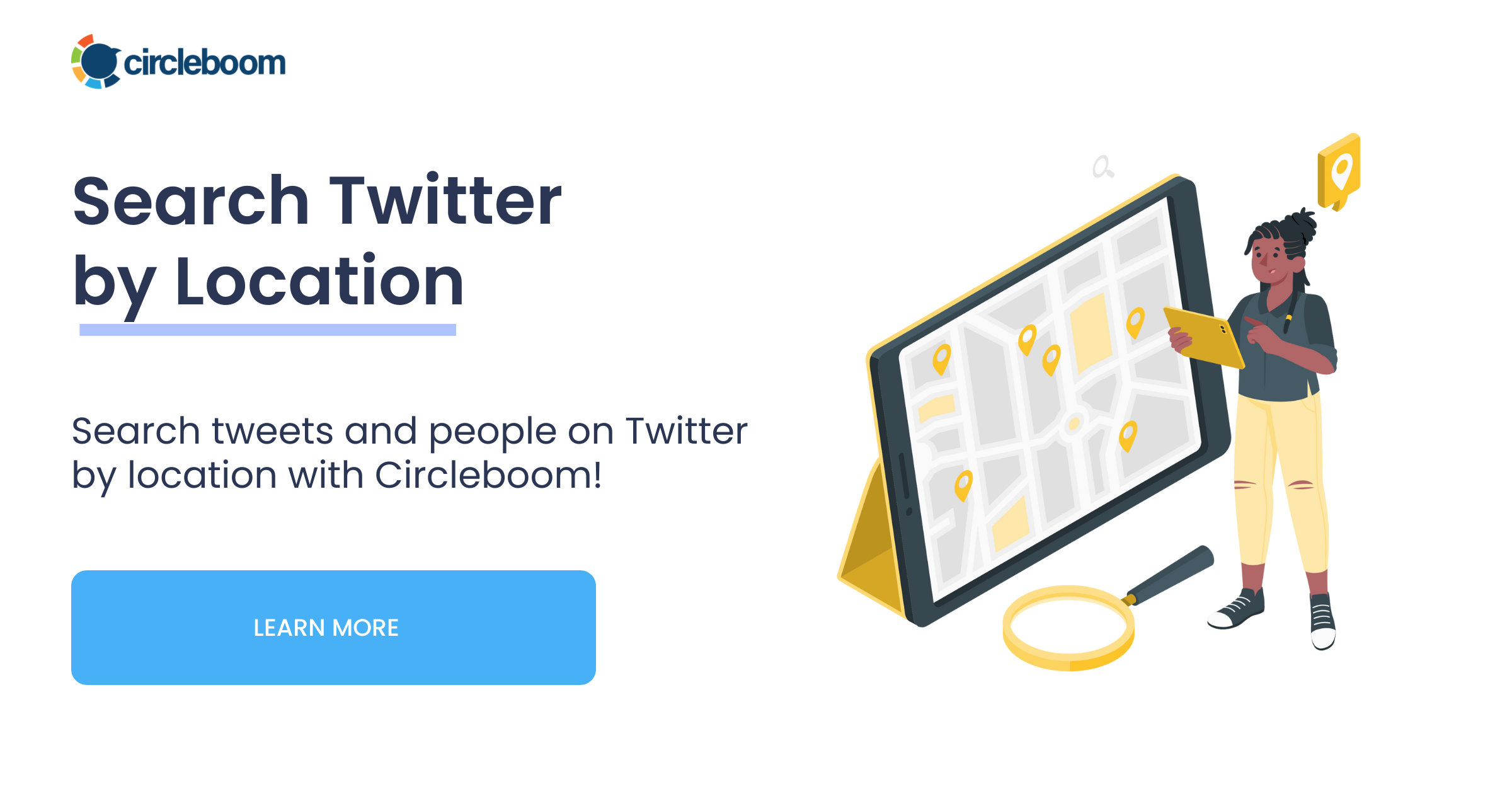
4. Additional Filters
- Verified accounts only.
- Follower count ranges (e.g., micro-influencers with 5k–20k followers vs. big accounts).
- Recent activity filters (no point adding inactive accounts).
5. Bulk Actions: Instead of adding people one by one, you can select dozens of accounts and add them to a List in seconds.
Whether you’re tracking for collaboration, monitoring, or outreach—you have them all neatly organized.
Step-by-Step: How I Find Influencers with Circleboom
Let’s take the “Crypto NYC” example again—here’s how I built that List using Circleboom:
Step #1: Log in to your Circleboom Twitter account on your browser.
You can register easily and quickly if you do not already have a Circleboom account.
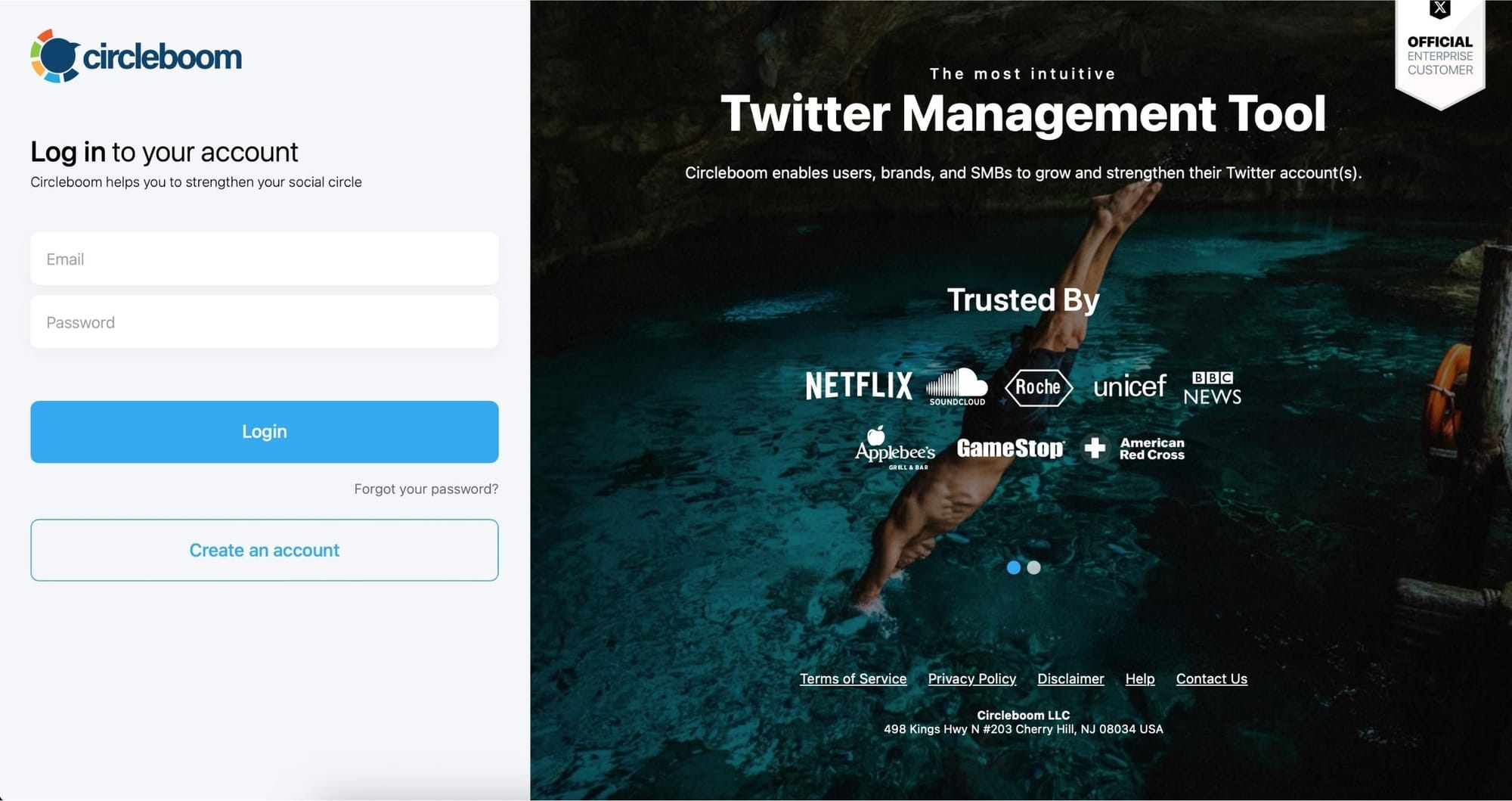
Step #2: If this is the first time you're using Circleboom, you should be authorizing your Twitter account for connection.
All you need to do is click on the big blue button. Then it should be automatically linked.
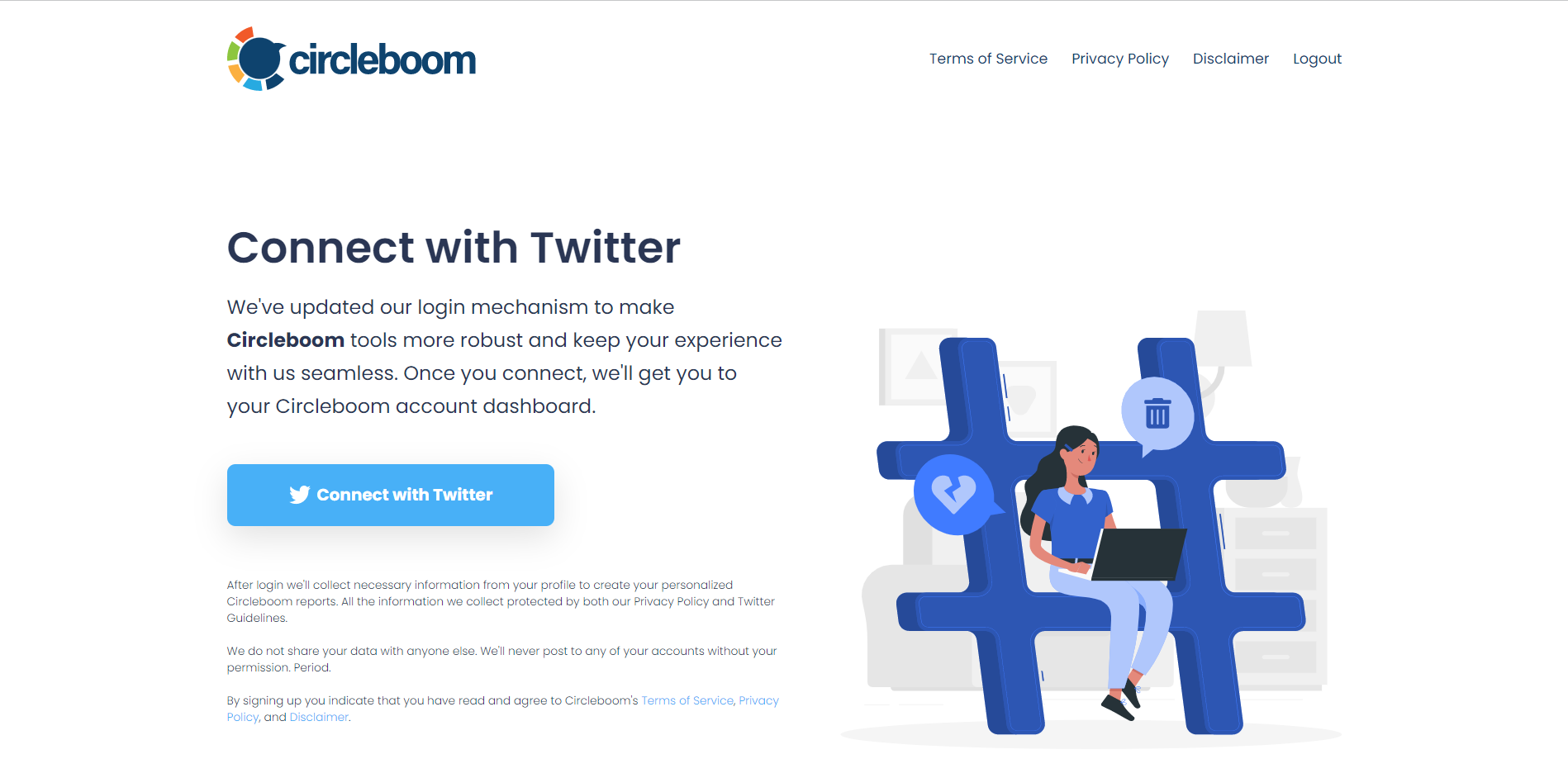
Step #3: To find Twitter influencers, navigate to the left menu and open the “Search” tab.
Then, proceed by clicking “Find Influencers”.
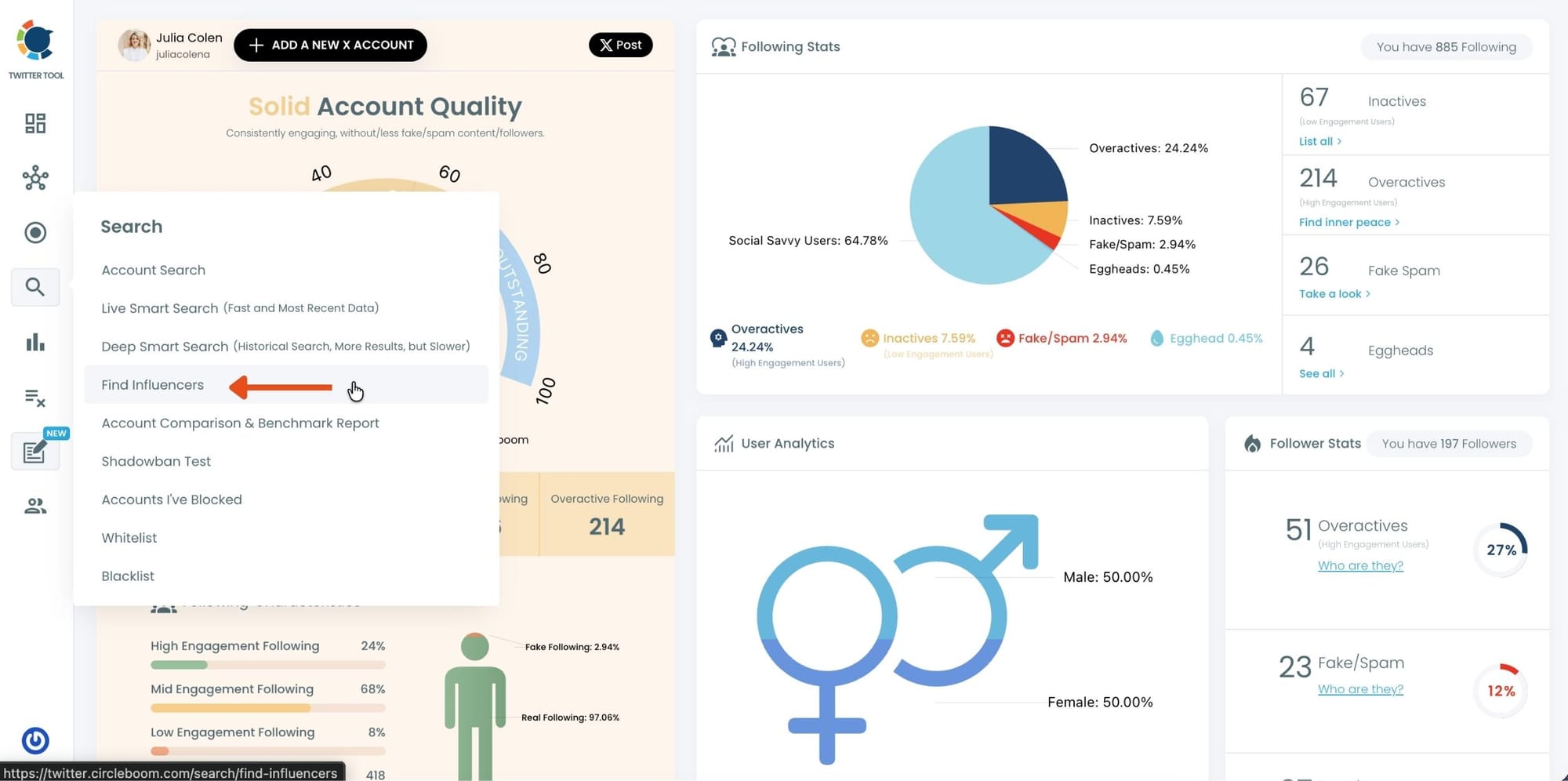
Step #4: Then type in your keyword and pick the engagement levels of the influencers you'd like to find.
Let's stick with the example of Crypto, and pick medium and high engagement influencers.
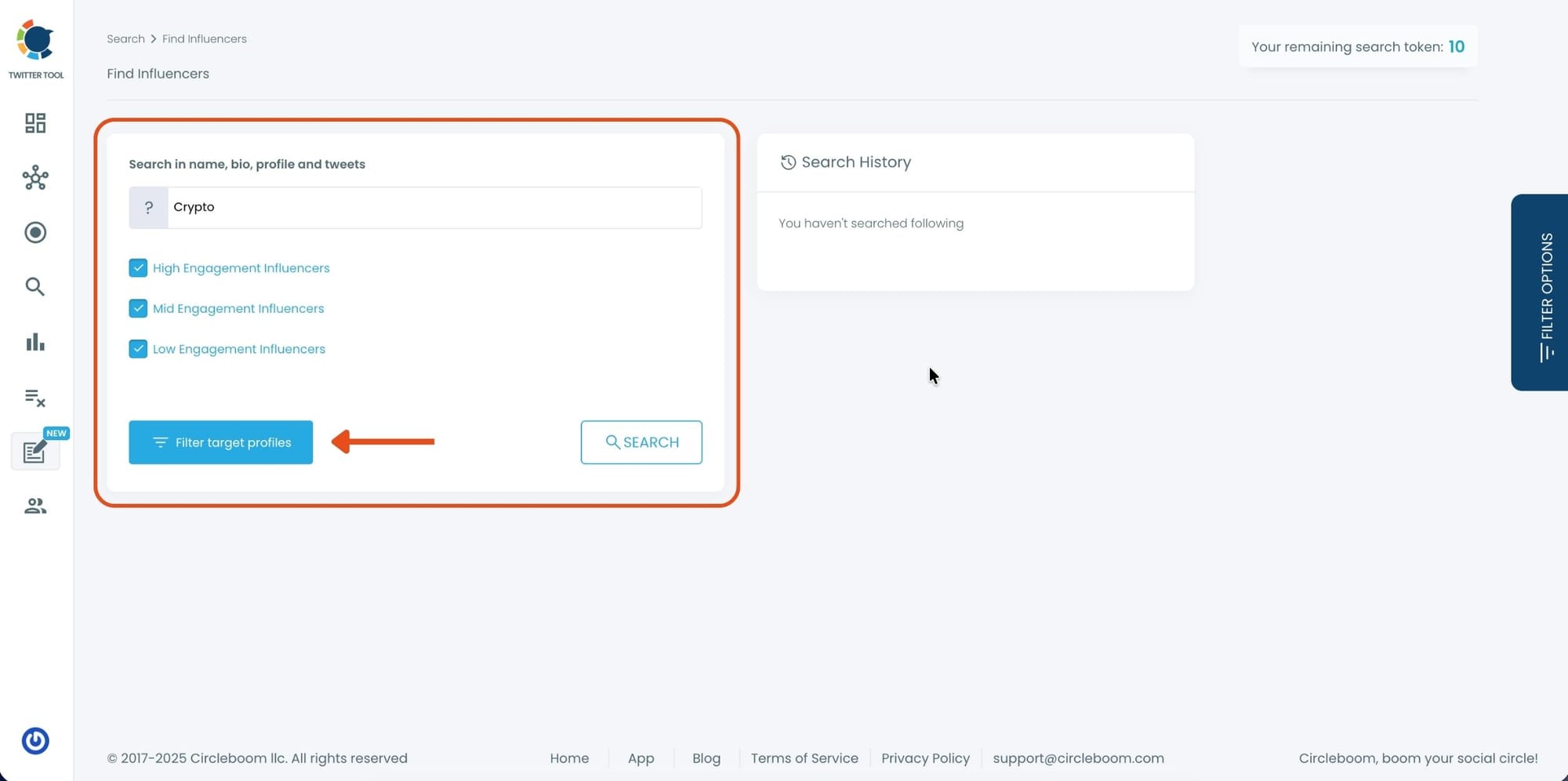
Step #5: And, of course, do not forget to add filters in order to find the top Twitter influencers in your niche more accurately.
Let's go for the biggest Twitter influencers with verification badges and a minimum of 50,000 followers in NYC. You can apply any other filter of your choice.
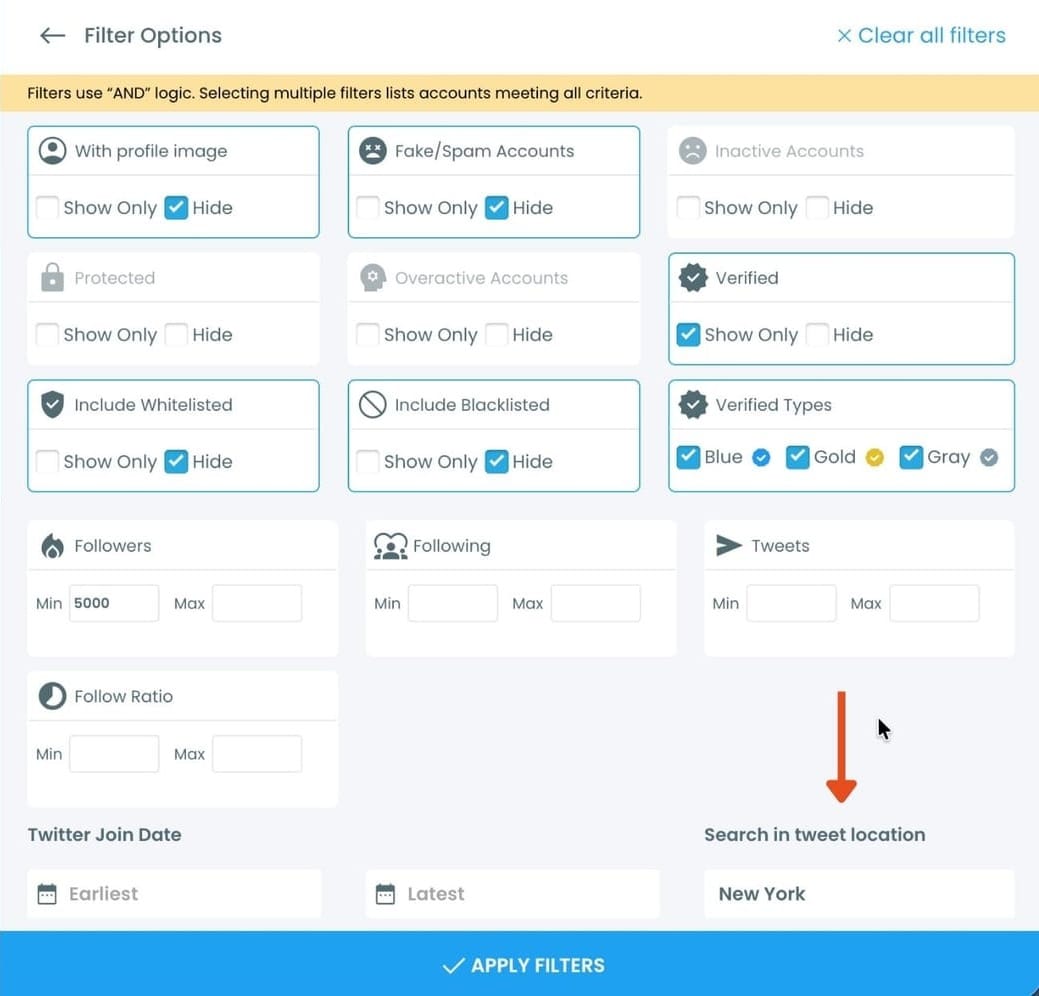
Step #6: And voila! You'll have the influencers listed before you.
Then you can sort them by popularity, inspect other metrics, and visit their Twitter profiles to contact them.
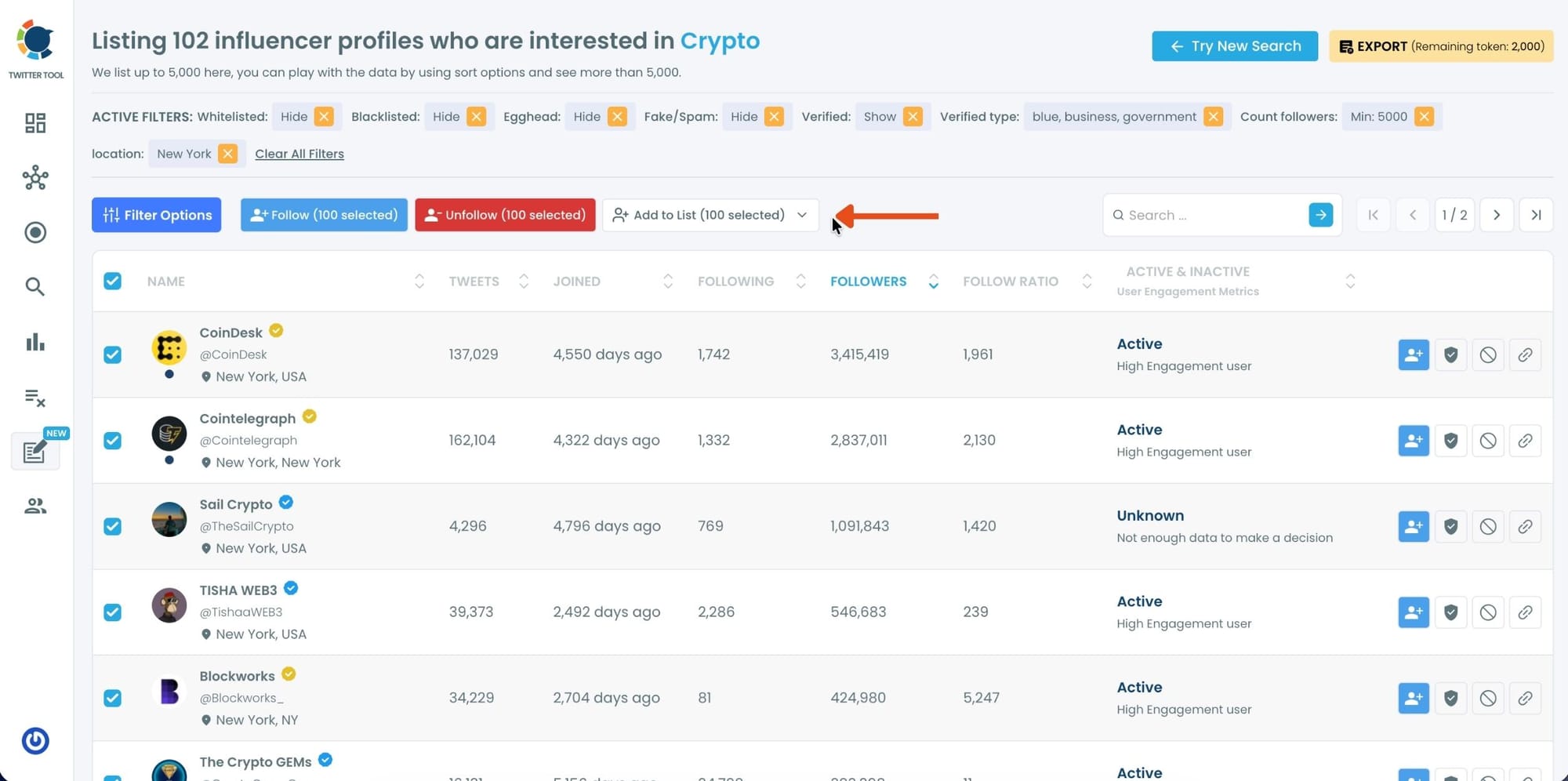
You can also add them to your Twitter lists or export these accounts as a CSV file.
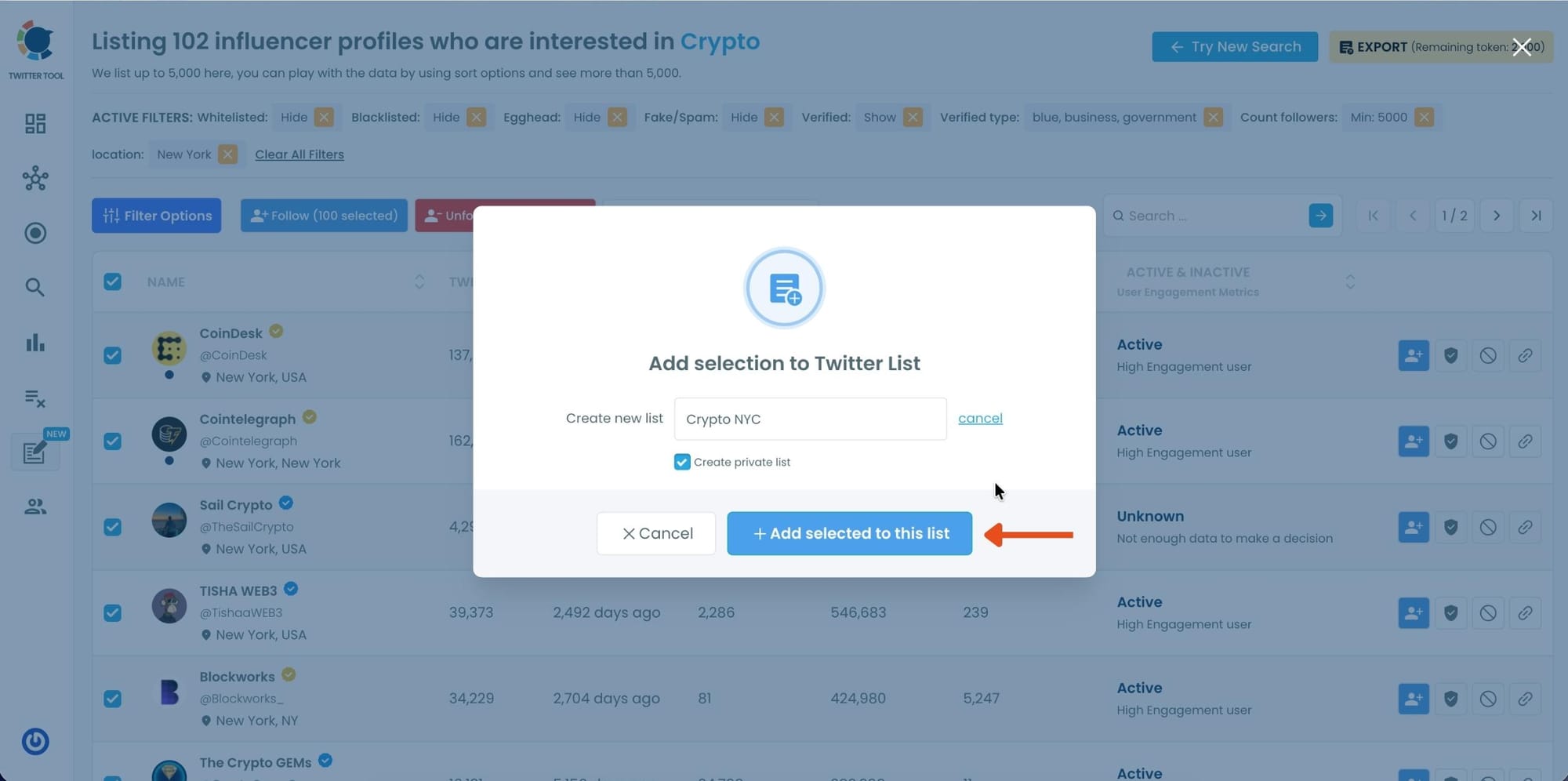
Compare that to the manual way, where I spent two hours to get maybe 20 profiles. The difference was night and day.
How I Actually Use These Lists
Once I had my influencer lists ready, here’s how they became useful in practice:
- Collaboration: Reached out to relevant influencers for campaign partnerships.
- Networking: Followed and engaged with them regularly to build relationships.
- Learning: My feed became a curated stream of valuable content—no noise, just insights.
- Campaign research: For a crypto event in NYC, I used my List to see what conversations were trending before and after.
- Ad targeting ideas: Exported List data and used it to inspire Twitter ad campaigns targeting influencer audiences.
Instead of randomly scrolling, I had a strategic influencer dashboard.
Pro Tips for Maximizing Circleboom
From my experience, here are some ways to get the most out of Circleboom when finding influencers:
🟢 Don’t rely only on big accounts. Micro-influencers often have higher engagement and more loyal followers.
🟢 Segment by region. Instead of one giant “crypto” List, split into Crypto NYC, Crypto London, Crypto Dubai.
🟢 Keep Lists private at first. This lets you research and monitor without broadcasting your strategy.
🟢 Update regularly. Influencer landscapes shift fast—new voices pop up monthly.
Final Thoughts
Finding influential Twitter users on a specific topic within a region is incredibly powerful—but nearly impossible to do efficiently with Twitter’s own tools.
I learned this the hard way when I wasted hours manually searching for crypto influencers in New York. Twitter’s native search just wasn’t built for advanced filtering or discovery.
With Circleboom Twitter, everything changed. In minutes, I could:
- Discover influencers by topic + region.
- Filter by credibility, activity, and follower size.
- Bulk add them to curated Lists for collaboration, networking, or monitoring.
That’s how I went from being frustrated and stuck to having 100+ influencer Lists that I use every day to collaborate, follow the right people, and stay on top of my niche.

👉 If you’re serious about influencer discovery on Twitter, Circleboom is the tool that makes it possible—fast, safe, and scalable.






